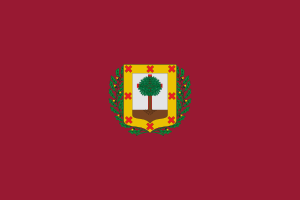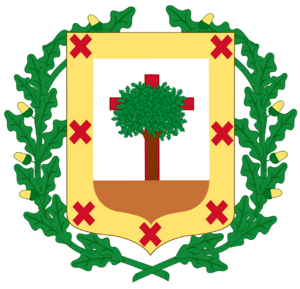Biscay facts for kids
Biscay (pronounced Biz-kai-a in Basque, or Viz-kai-a in Spanish) is a special part of Spain. It's a province located right on the southern coast of a large body of water called the Bay of Biscay. This area is also known as a historical territory within the Basque Country. The biggest and most important city in Biscay is Bilbao.
Contents
What is Biscay?
Biscay is one of the seven traditional territories that make up the Basque Country. It's known for its beautiful coastline, green mountains, and a mix of modern cities and charming old towns. The people here speak two main languages: Basque (or Euskara) and Spanish.
Where is Biscay Located?
Biscay is in the northern part of Spain. It borders the Bay of Biscay to the north. To its east, you'll find the province of Gipuzkoa. To the south, it shares borders with Álava and the region of Castile and León. To the west, it's next to Cantabria. This location gives Biscay a varied landscape, from sandy beaches to high peaks.
The Capital City: Bilbao
Bilbao is the heart of Biscay. It's a vibrant city that has changed a lot over the years. Once an industrial center, Bilbao is now famous for its modern architecture and culture. The Guggenheim Museum Bilbao is a great example of this. It attracts visitors from all over the world. Bilbao is also a major port and a hub for business and education.
A Glimpse into Biscay's History
Biscay has a very long and interesting history. People have lived here for thousands of years. Ancient caves show us that early humans lived in this region.
Early Times and Roman Influence
Long ago, the area was home to different tribes. The Romans arrived in the Iberian Peninsula, but they didn't fully control Biscay. The Basque people kept much of their unique culture and language. You can still find remains of Roman settlements, like those in Forua.
The Lordship of Biscay
For many centuries, Biscay was known as the Lordship of Biscay. It had its own special laws and traditions. These laws were called fueros. The Lordship was connected to the Kingdom of Castile (which later became part of Spain). However, Biscay kept a lot of its independence. The fueros protected the rights of the people.
The Oak of Gernika
A very important symbol of Biscay's history is the Oak of Gernika. This ancient oak tree is where the Lords of Biscay and later, Spanish monarchs, would swear to uphold the fueros. It represents the unique self-governance and traditions of the Basque people. Even today, new leaders of Biscay visit the tree.
Modern Times
In more recent history, Biscay played a big role in Spain's industrial growth. Bilbao became a major center for iron and steel production. This brought many people to the region. Today, Biscay continues to be an important economic area. It balances its rich history with modern developments.
Nature and Landscapes
Biscay is a land of diverse natural beauty. From its rugged coastline to its green inland areas, there's a lot to explore.
The Coastline
The coast of Biscay is stunning. It has dramatic cliffs, hidden coves, and sandy beaches. Popular spots include Gaztelugatxe, a small island with a hermitage connected by a winding staircase. It's a truly magical place. Surfers love the waves at Mundaka. The Urdaibai Biosphere Reserve is also on the coast. It's a protected area with rich wildlife, especially birds.
Mountains and Parks
Inland, Biscay has several mountain ranges. The Urkiola Natural Park is a beautiful area for hiking and enjoying nature. You can see impressive peaks like Untxillaitz. These mountains offer great views and a chance to connect with nature.
Economy and Transport
Biscay is an important economic hub in Spain. It has a strong industry and good transport links.
Industry and Trade
Historically, mining and shipbuilding were very important. Today, Biscay has a modern economy. It includes advanced manufacturing, technology, and services. The Port of Bilbao is one of the busiest in Spain. It handles a lot of goods coming in and out of the country.
Getting Around
Biscay has excellent transport connections. The Bilbao Airport connects the region to many cities in Europe. There are also good train services, including a main station in Bilbao. Highways, like the Cantabric Highway, make it easy to travel by car.
Images for kids
-
House where Carlist General Tomás de Zumalacárregui was hurt, and the Basilica of Begoña in 1835, after the Siege of Bilbao.
-
The historic Oak of Gernika, symbol of the Basque institutions.
-
Gaztelugatxe, in Bermeo
-
Untxillaitz, in Urkiola mountain range.
-
Coast of Biscay from Elantxobe eastwards
See also
 In Spanish: Vizcaya para niños
In Spanish: Vizcaya para niños



















